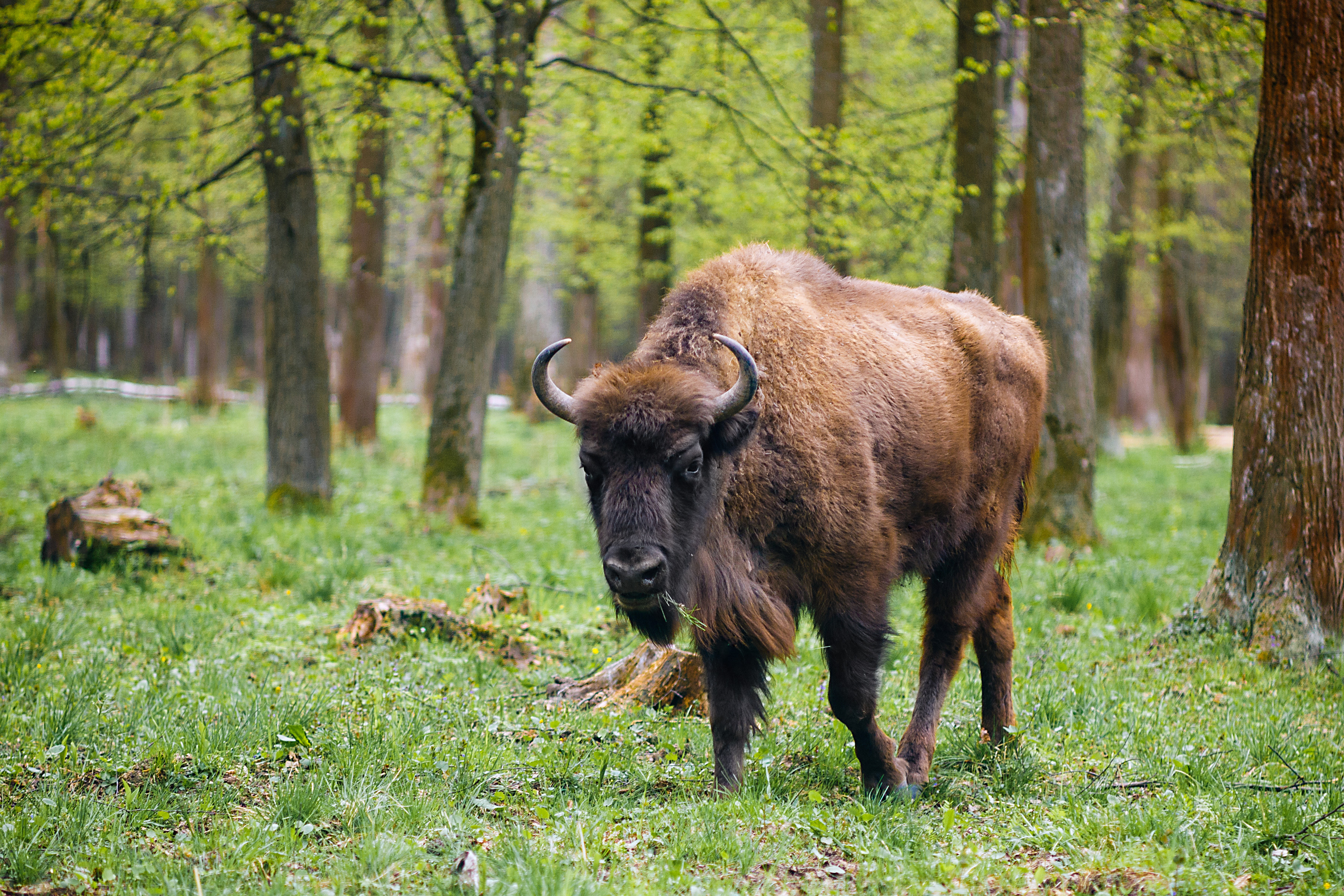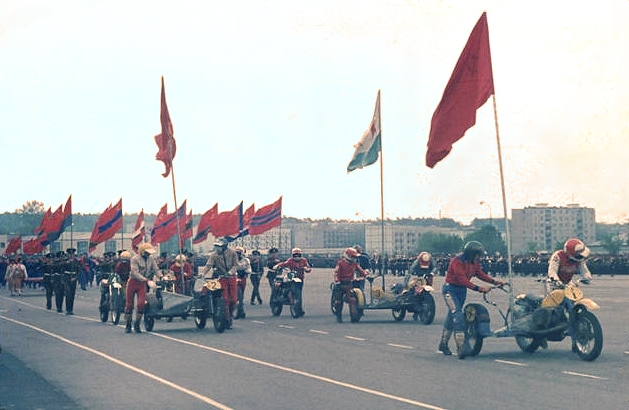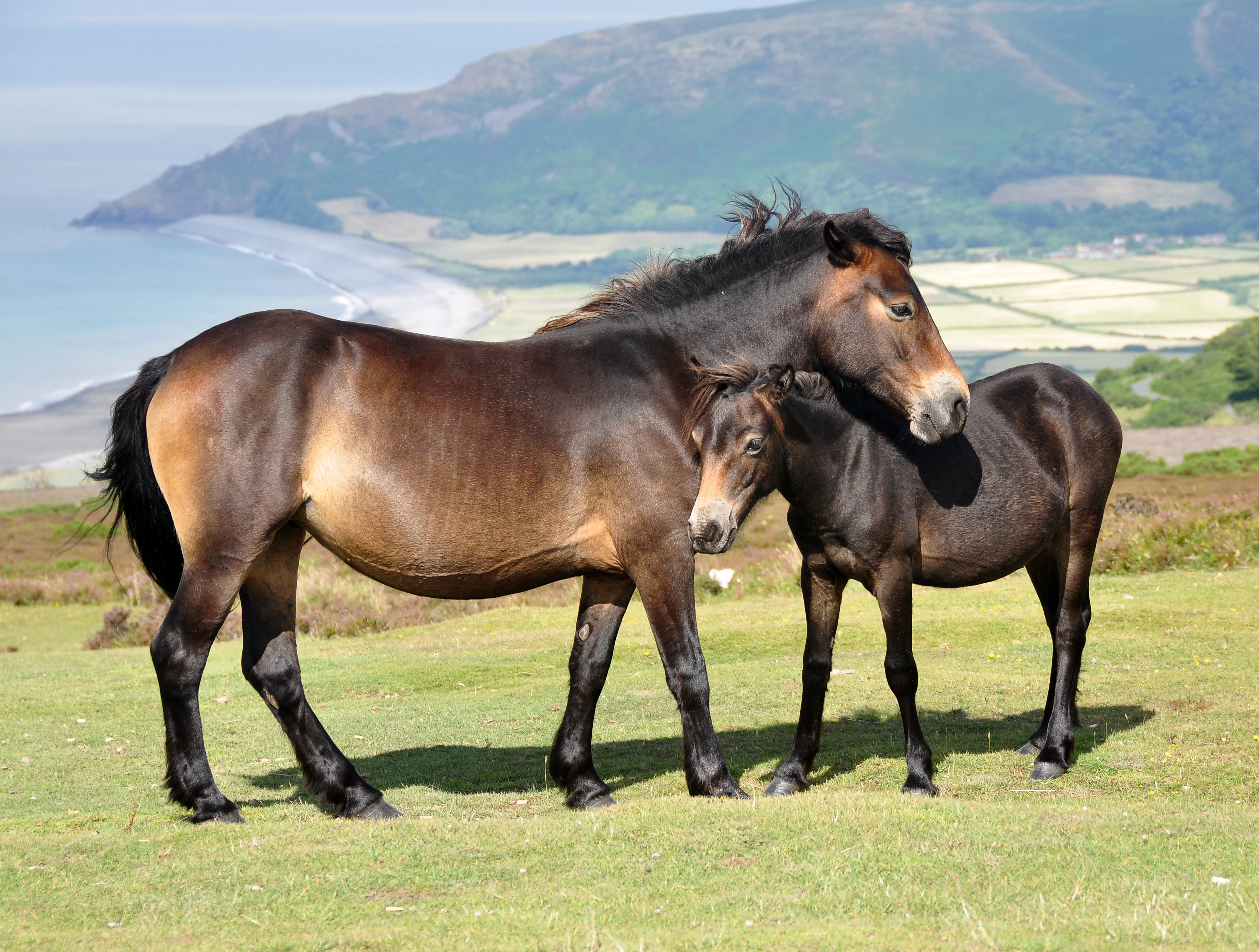|
Milovice
Milovice (; german: Milowitz) is a town in Nymburk District in the Central Bohemian Region of the Czech Republic. It has about 12,000 inhabitants. In the 20th century, the history of the town was influenced by the presence of a military base. In the 21st century, Milovice is one of the fastest growing towns with the youngest population. Administrative parts Town parts and villages of Benátecká Vrutice, Boží Dar and Mladá are administrative parts of Milovice. Geography Milovice is located about northwest of Nymburk and northeast of Prague. The western part of the municipal territory lies in the Jizera Table, the eastern part lies in the Central Elbe Table. The Mlynařice stream, a tributary of the Elbe, flows through the territory. History The first written mention of Milovice is from 1396. Since the 1990s, the town Milovice belongs to the fastest growing suburban areas in the Czech Republic mainly thanks to cheap accommodation left by the Soviet Army. Military base Th ... [...More Info...] [...Related Items...] OR: [Wikipedia] [Google] [Baidu] |
Milovice Nature Reserve
Milovice Nature Reserve ( cs, Přírodní rezervace Milovice) is a nature reserve next to the towns of Milovice and Benátky nad Jizerou in Nymburk District, Central Bohemian Region, Czech Republic. Established in 2015, the area is administered by the Česká krajina o.p.s. organization, as a part of Evropsky významná lokalita Milovice-Mladá CZ0214006 protected area, part of the European Union project Natura 2000. This reserve is a pioneering project of cooperation between several scientific bodies (Czech Academy of Sciences, University of South Bohemia České Budějovice, Charles University Prague, Czech University of Life Sciences Prague, Masaryk University Brno among others) and draws support from many organizations and private sponsors (EU's Operational Programme Environment - , Central Bohemian Region, EKOSPOL, Net4Gas, Pivovar Zubr, Nadační fond rodiny Orlických, JK Jewels, State Environmental Fund of the Czech Republic, Milovice and Benátky nad Jizerou townsh ... [...More Info...] [...Related Items...] OR: [Wikipedia] [Google] [Baidu] |
Milovice 1908
Milovice (; german: Milowitz) is a town in Nymburk District in the Central Bohemian Region of the Czech Republic. It has about 12,000 inhabitants. In the 20th century, the history of the town was influenced by the presence of a military base. In the 21st century, Milovice is one of the fastest growing towns with the youngest population. Administrative parts Town parts and villages of Benátecká Vrutice, Boží Dar and Mladá are administrative parts of Milovice. Geography Milovice is located about northwest of Nymburk and northeast of Prague. The western part of the municipal territory lies in the Jizera Table, the eastern part lies in the Central Elbe Table. The Mlynařice stream, a tributary of the Elbe, flows through the territory. History The first written mention of Milovice is from 1396. Since the 1990s, the town Milovice belongs to the fastest growing suburban areas in the Czech Republic mainly thanks to cheap accommodation left by the Soviet Army. Military base The ... [...More Info...] [...Related Items...] OR: [Wikipedia] [Google] [Baidu] |
Central Group Of Forces
The Central Group of Forces (Russian: Центральная группа войск) was a formation of the Soviet Armed Forces used to incorporate Soviet troops in Central Europe on two occasions: in Austria and Hungary from 1945 to 1955 and troops stationed in Czechoslovakia after the Prague Spring of 1968. History First formation After the end of the Second World War, the Soviet High Command (Stavka) reorganized its troops on the territories it liberated from the Nazi occupation and now occupied. Stavka Directive Nr 11097 on 10 June 1945 created several new formations, known as ''Groups of Forces'', equivalent to military districts but located outside the Soviet Union. The Central Group of Forces was created around that time from the 1st Ukrainian Front to control troops in Austria and Hungary, and did so from 1945 until 1955, when Soviet troops were withdrawn from Austria after the Austrian State Treaty was agreed. Its first commander was Marshal of the Soviet Union Iva ... [...More Info...] [...Related Items...] OR: [Wikipedia] [Google] [Baidu] |
Central Bohemian Region
The Central Bohemian Region ( cz, Středočeský kraj, german: Mittelböhmische Region) is an administrative unit ( cz, kraj) of the Czech Republic, located in the central part of its historical region of Bohemia. Its administrative centre is in the Czech capital Prague, which lies in the centre of the region. However, the city is not part of it but is a region of its own. The Central Bohemian Region is in the centre of Bohemia. In terms of area, it is the largest region in the Czech Republic, with 11,014 km2, almost 14% of the total area of the country. It surrounds the country's capital, Prague, and borders Liberec Region (in the north), Hradec Králové Region (northeast), Pardubice Region (east), Vysočina Region (southeast), South Bohemian Region (south), Plzeň Region (west) and Ústí nad Labem Region (northwest). Administrative divisions The Central Bohemian Region is divided into 12 districts: Příbram District is the region's largest district in terms of area ( ... [...More Info...] [...Related Items...] OR: [Wikipedia] [Google] [Baidu] |
Kistarcsa
Kistarcsa () is a town in Pest County, Budapest metropolitan area, Hungary. A site of the Kistarcsa concentration camp during the Holocaust. Later an internment camp of State Protection Authority for political prisoners during the 1950s. History Only a few archaeological excavations were held on the territory of Kistarcsa; the earliest findings are from the Neolithic Era (4000–2500 BC). From this time it was always a populated area: Celts, Vandals, Alans, Sarmatas and Avars lived here. After the fall of the Avar Empire the Magyars found an underpopulated area, so they could settle down easily. Their settlement can be dated back to the 10th to 13th centuries according to the excavated area next to the cemetery of Kistarcsa. Notable people * Bernadett Baczkó, judoka *Jane Haining, Scottish Church of Scotland missionary *László Háry, major general, aviator and a Commander of the First Independent Hungarian Air Force * Zoltán Meszlényi, martyr bishop * József Simándy, t ... [...More Info...] [...Related Items...] OR: [Wikipedia] [Google] [Baidu] |
Nymburk District
Nymburk District ( cs, okres Nymburk) is a district in the Central Bohemian Region of the Czech Republic. Its capital is the town of Nymburk. Administrative division Nymburk District is divided into three administrative districts of municipalities with extended competence: Nymburk, Lysá nad Labem and Poděbrady. List of municipalities Towns are marked in bold and market towns in ''italics'': Běrunice - Bobnice - Bříství - Budiměřice - Chleby - Choťánky - Chotěšice - Chrást - Chroustov - Čilec - Činěves - Dlouhopolsko - Dobšice - Dvory - Dymokury - Hořany - Hořátev - Hradčany - Hradištko - Hrubý Jeseník - Jíkev - Jiřice - Jizbice - Kamenné Zboží - Kněžice - Kněžičky - Kolaje - Kostelní Lhota - Kostomlátky - Kostomlaty nad Labem - Košík - Kounice - Kouty - Kovanice - Krchleby - Křečkov - '' Křinec'' - Libice nad Cidlinou - '' Loučeň'' - Lysá nad Labem - Mcely - Městec Králové - Milčice - Milovice - Netř ... [...More Info...] [...Related Items...] OR: [Wikipedia] [Google] [Baidu] |
Conservation Grazing
Conservation grazing or targeted grazing is the use of semi- feral or domesticated grazing livestock to maintain and increase the biodiversity of natural or semi-natural grasslands, heathlands, wood pasture, wetlands and many other habitats. Conservation Grazing Peninsula Open Space Trust, California, US, 2009. (cited 2009 Mar 11)What is Conservation Grazing? Grazing Advice Partnership, UK, 2009. Conservation grazing is generally less intensive than practices such as [...More Info...] [...Related Items...] OR: [Wikipedia] [Google] [Baidu] |
Exmoor Pony
The Exmoor pony is one of the mountain and moorland pony breeds native to the British Isles. Some still roam as semi-feral livestock on Exmoor, a large area of moorland in Devon and Somerset in southwest England. The Exmoor has been given "Priority" conservation status by the Rare Breeds Survival Trust (UK), and "threatened" status by The Livestock Conservancy (USA). Exmoor ponies are particularly well-adapted to cold and wet weather and therefore very hardy, having conformation similar to that of other cold-weather-adapted pony breeds. The free-roaming herds on Exmoor contribute to the conservation and management of several natural habitats. Most foals born into the free-living herds are sold and with taming and training undertake a variety of equestrian activities. Equines have been present in Britain since 700,000 BC, with populations retreating south when ice-ages made the land uninhabitable and recolonising when warmer conditions allowed. Some theorise that Exmoo ... [...More Info...] [...Related Items...] OR: [Wikipedia] [Google] [Baidu] |
World War I
World War I (28 July 1914 11 November 1918), often abbreviated as WWI, was one of the deadliest global conflicts in history. Belligerents included much of Europe, the Russian Empire, the United States, and the Ottoman Empire, with fighting occurring throughout Europe, the Middle East, Africa, the Pacific, and parts of Asia. An estimated 9 million soldiers were killed in combat, plus another 23 million wounded, while 5 million civilians died as a result of military action, hunger, and disease. Millions more died in genocides within the Ottoman Empire and in the 1918 influenza pandemic, which was exacerbated by the movement of combatants during the war. Prior to 1914, the European great powers were divided between the Triple Entente (comprising France, Russia, and Britain) and the Triple Alliance (containing Germany, Austria-Hungary, and Italy). Tensions in the Balkans came to a head on 28 June 1914, following the assassination of Archduke Franz Ferdin ... [...More Info...] [...Related Items...] OR: [Wikipedia] [Google] [Baidu] |
Czechoslovak Army
The Czechoslovak Army (Czech and Slovak: Československá armáda) was the name of the armed forces of Czechoslovakia. It was established in 1918 following Czechoslovakia's declaration of independence from Austria-Hungary. History In the first months of the World War I, the response of the Czech soldiers and civilians to the war and mobilisation efforts were highly enthusiastic, however it turned into apathy later. Although modeled after Austro-Hungarian Army patterns, the army of the newly established state also incorporated former members of the Czechoslovak Legion fighting alongside the Entente during World War I. Czechoslovak Army took part in the brief Polish-Czechoslovak War in which Czechoslovakia annexed the Zaolzie region from Poland. In the interbellum the force was fairly modern by contemporary standards, with the core of the force formed by LT vz. 38 and LT vz. 35 tanks, as well as an extensive system of border fortifications. Mobilised during the Munich Confe ... [...More Info...] [...Related Items...] OR: [Wikipedia] [Google] [Baidu] |
German Occupation Of Czechoslovakia
German(s) may refer to: * Germany (of or related to) ** Germania (historical use) * Germans, citizens of Germany, people of German ancestry, or native speakers of the German language ** For citizens of Germany, see also German nationality law **Germanic peoples (Roman times) * German language **any of the Germanic languages * German cuisine, traditional foods of Germany People * German (given name) * German (surname) * Germán, a Spanish name Places * German (parish), Isle of Man * German, Albania, or Gërmej * German, Bulgaria * German, Iran * German, North Macedonia * German, New York, U.S. * Agios Germanos, Greece Other uses * German (mythology), a South Slavic mythological being * Germans (band), a Canadian rock band * "German" (song), a 2019 song by No Money Enterprise * ''The German'', a 2008 short film * "The Germans", an episode of ''Fawlty Towers'' * ''The German'', a nickname for Congolese rebel André Kisase Ngandu See also * Germanic (other) * Ger ... [...More Info...] [...Related Items...] OR: [Wikipedia] [Google] [Baidu] |
Exmoor National Park
Exmoor is loosely defined as an area of hilly open moorland in west Somerset and north Devon in South West England. It is named after the River Exe, the source of which is situated in the centre of the area, two miles north-west of Simonsbath. Exmoor is more precisely defined as the area of the former ancient royal hunting forest, also called Exmoor, which was officially surveyed 1815–1818 as in extent. The moor has given its name to a National Park, which includes the Brendon Hills, the East Lyn Valley, the Vale of Porlock and of the Bristol Channel coast. The total area of the Exmoor National Park is , of which 71% is in Somerset and 29% in Devon. The upland area is underlain by sedimentary rocks dating from the Devonian and early Carboniferous periods with Triassic and Jurassic age rocks on lower slopes. Where these reach the coast, cliffs are formed which are cut with ravines and waterfalls. It was recognised as a heritage coast in 1991. The highest point on Exmoo ... [...More Info...] [...Related Items...] OR: [Wikipedia] [Google] [Baidu] |






